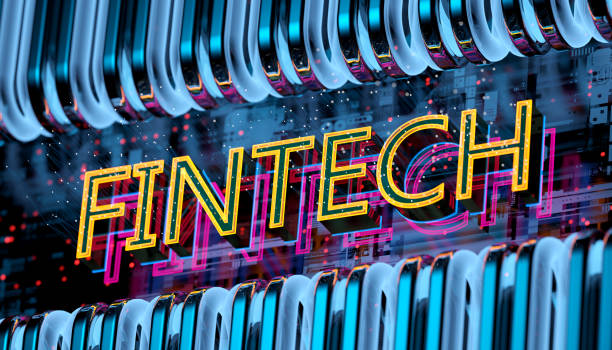Predictive analytics is an important concept in today’s business landscape.
Companies are currently flooded with data.
This can range from log files to photos and videos and is stored in various data repositories across an organisation.
Data scientists employ deep learning and machine learning algorithms to detect patterns and forecast future events to obtain insights from this data.
Neural networks, decision trees, and logistic and linear regression models are a few of these statistical methods.
Some of these modelling methods build on earlier prediction learnings to derive new predictive insights.
What is Predictive Analytics?
Predictive analytics uses both current and historical data to forecast activity, behaviour, and trends.
Statistical analytic methods, data queries, and machine learning algorithms develop predictive models from data sets.
These models provide a score or numerical value indicating the likelihood of a specific action or event.
It is a crucial discipline in data analytics, an umbrella term for applying quantitative methods and subject-matter expertise to extract meaning from data and provide basic insights into a company, the environment, health care, scientific research, and other fields of study.
Read: The Role of AI in CRM: Enhancing Customer Interactions and Predictive Analytics

Predictive Analytics Models
These models analyse historical data, identify patterns, spot trends, and then utilise that knowledge to forecast upcoming developments.
Clustering, classification, and time series models are common predictive analytics models.
Clustering models
Models for clustering are a type of unsupervised learning.
They classify data according to comparable qualities.
An online store can use this approach to categorize clients into groups with similar characteristics and create tailored marketing plans.
K-means, mean-shift, density-based spatial clustering of applications with noise (DBSCAN), expectation-maximization (EM) clustering with Gaussian Mixture Models (GMM), and hierarchical clustering are examples of common clustering techniques.
Classification models
The category of supervised machine learning models includes classification models.
These models describe relationships within a particular dataset and categorise data based on past data.
This paradigm applies to segmentation by grouping customers or prospects effectively.
As an alternative, it can also provide binary responses to questions, such as true or false or yes or no; common applications include fraud detection and credit risk assessment.
Logistic regression, decision trees, random forests, neural networks, and Naive Bayes are examples of categorization models.
Time series models
Time series models employ different data inputs at predetermined time intervals, such as daily, weekly, monthly, etc.
When analysing data for seasonality, trends, and cyclical behaviour, it is common practice to display the dependent variable over time.
This can help identify the requirements for particular model types and transformations.
Time series models include the autoregressive (AR), moving average (MA), ARMA, and ARIMA types.
A call centre, for instance, might use a time series model to predict how many calls it will get per hour at various times of the day.
Read: The Power of Data Analytics: How Insights Can Drive Business Decisions
Predictive Analytics Techniques
Data mining, machine learning, and other data analysis techniques are all incorporated into predictive analytics.
Predictive analytics uses the approaches listed below:
Decision Trees
A decision tree is a machine learning-based analytics technique that forecasts the prospective risks and advantages of performing particular actions using data mining techniques.
It is a graphic representation of the potential outcomes of a decision that looks like an upside-down tree.
It can address complex questions and resolve all kinds of categorization challenges when utilised for analytics.
Neural Networks
By replicating how the human brain functions, neural networks were created as a type of predictive analytics.
Artificial intelligence and pattern recognition are used in this model to handle complex data interactions.
Put Your Tech Company on the Map!
Get featured on Nicholas Idoko’s Blog for just $50. Showcase your business, boost credibility, and reach a growing audience eager for tech solutions.
Publish NowUse it when you have several challenges to overcome.
This includes when you have an excessive amount of data.
It could also be when you lack the formula you need to assist you in identifying a relationship between the inputs and outputs in your dataset.
Or when you need to make predictions rather than provide explanations.
Regression
Regression is the most commonly used model in statistical analysis.
Use it when there is a linear relationship between the inputs and you want to find patterns in vast data sets.
This method determines the formula describing the relationship between all the inputs in the dataset.
For instance, regression can determine how price and other variables influence a security’s performance.
Read: 7 Applications of Predictive Analysis
Predictive Analytics Tools
Predictive analytics tools assist you in making future predictions with the use of data.
Instead, it gives you information about the likelihood of alternative events.
Understanding these alternatives could help you plan different aspects of your organisation.
SAS Advanced Analytics
The market leader in analytics, SAS offers a wide range of different predictive analytics products.
It could be challenging to decide which tool(s) you’ll need for your particular needs because the list is so extensive.
Additionally, it is challenging to compare prices because the company does not provide upfront pricing. But given the variety of tools available, it’s likely that SAS has what you need.
IBM SPSS
IBM SPSS (Statistical Package for the Social Sciences) is an analytics program that uses statistics and data modeling.
The software can handle both structured and unstructured data.
This software is available in the cloud, on-premises, or hybrid deployment to satisfy security and mobility requirements.
H2O
H2O should be at the top of your list if you’re seeking an open-source predictive analytics solution.
It offers rapid performance, affordable pricing, top-notch features, and adaptability.
The H20 dashboard visualizes excellent data insights.
But rather than being created for amateur data scientists, this tool is for seasoned data scientists.
This can be a helpful tool if you’ve invested in training.
RapidMiner Studio
RapidMiner Studio combines business implementation with data preparation and analysis.
To automate reporting based on time intervals or to have events cause changes to your visualisations, you can use this code-optimal programme.
You can import and export your data sets to different programmes using the platform’s more than 60 inbuilt integrations.
Anomaly detection, text processing, and web mining are just a few additional features extensions offer you.
But they may cost more than the basic membership fee.
TIBCO Spotfire
There are many capabilities in TIBCO Spotfire for handling huge data volumes.
Regarding predictive analytics, Spotfire is easy enough for everyone to use.
One-click prediction is a function available in Spotfire.
These techniques for grouping and classifying data are already programmed.
It also displays relationships and forecasts.
Spotfire offers a lovely data presentation.
It continuously updates in real-time while reading data.
Put Your Tech Company on the Map!
Get featured on Nicholas Idoko’s Blog for just $50. Showcase your business, boost credibility, and reach a growing audience eager for tech solutions.
Publish NowMaking your own apps to utilise the platform is easy.
The machine learning algorithms used by Spotfire gain deeper knowledge.
Read: The Role of Machine Learning in Predictive Analysis
Why Predictive Analytics is Important
Businesses use predictive analytics to find new opportunities and address challenging issues.
Typical uses include:
Optimizing marketing campaigns
Predictive analytics forecasts customer behavior and purchases, encouraging cross-selling opportunities.
Predictive models assist firms in luring in, keeping, and expanding their most valuable clients.
Improving operations
Predictive models are often used by businesses to forecast inventory and manage resources.
Predictive analytics is used by airlines to determine ticket prices.
To maximise occupancy and boost income, hotels try to anticipate the number of guests for any particular night.
Organisations can work more effectively thanks to predictive analytics.
Reducing risk
Credit ratings are a well-known use of predictive analytics to determine a buyer’s propensity to default on transactions.
A predictive model’s calculation of a person’s creditworthiness yields a number known as a credit score.
The usage of insurance claims and collections falls under the category of risk.
Detecting fraud
Combining several analytics techniques helps increase pattern recognition and deter illicit activity.
High-performance behavioural analytics monitors all network activity in real-time to look for anomalies that could point to fraud, zero-day vulnerabilities, or advanced persistent threats as cybersecurity concerns escalate.
Healthcare
In healthcare, predictive analytics is used to track specific infections like sepsis and identify and manage the care of people with chronic illnesses.
Geisinger Health mined medical information using predictive analytics to understand the detection and management of sepsis better.
Based on the medical records of more than 10,000 patients who had previously been given a sepsis diagnosis, Geisinger developed a predictive model.
The model made impressive predictions of patients with a high rate of survival.
Conclusion
Predictive analytics is transforming how businesses operate by leveraging data to anticipate future trends and behaviours.
Predictive models offer significant advantages from optimising marketing campaigns to improving operational efficiency and reducing risk.
They enhance decision-making by providing insights into customer behavior, inventory needs, and potential risks.
Moreover, in sectors like healthcare, predictive analytics plays a crucial role in disease management and patient care.
As businesses continue to harness the power of data, integrating advanced predictive tools and techniques will become increasingly essential.
This will drive innovation and deliver strategic advantages across various industries.
Before You Go…
Hey, thank you for reading this blog post to the end. I hope it was helpful. Let me tell you a little bit about Nicholas Idoko Technologies.
We help businesses and companies build an online presence by developing web, mobile, desktop, and blockchain applications.
We also help aspiring software developers and programmers learn the skills they need to have a successful career.
Take your first step to becoming a programming expert by joining our Learn To Code academy today!
Be sure to contact us if you need more information or have any questions! We are readily available.
[E-Books for Sale]
1,500 AI Applications for Next-Level Growth: Unleash the Potential for Wealth and Innovation
$5.38 • 1,500 AI Applications • 228 pages
Put Your Tech Company on the Map!
Get featured on Nicholas Idoko’s Blog for just $50. Showcase your business, boost credibility, and reach a growing audience eager for tech solutions.
Publish NowAre you ready to tap into the power of Artificial Intelligence without the tech jargon and endless guesswork? This definitive e-book unlocks 1,500 real-world AI strategies that can help you.
See All 1,500 AI Applications of this E-Book
750 Lucrative Business Ideas: Your Ultimate Guide to Thriving in the U.S. Market
$49 • 750 Business Ideas • 109 pages
Unlock 750 profitable business ideas to transform your future. Discover the ultimate guide for aspiring entrepreneurs today!
See All 750 Business Ideas of this E-Book
500 Cutting-Edge Tech Startup Ideas for 2024 & 2025: Innovate, Create, Dominate
$19.99 • 500 Tech Startup Ideas • 62 pages
You will get inspired with 500 innovative tech startup ideas for 2024 and 2025, complete with concise descriptions to help you kickstart your entrepreneurial journey in AI, Blockchain, IoT, Fintech, and AR/VR.
We Design & Develop Websites, Android & iOS Apps
Looking to transform your digital presence? We specialize in creating stunning websites and powerful mobile apps for Android and iOS. Let us bring your vision to life with innovative, tailored solutions!
Get Started Today




